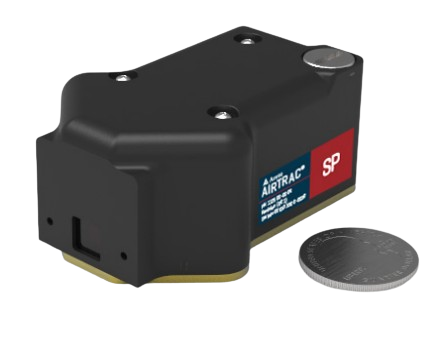AIRTRAC-SP
DPSS Laser, ns Pulsed, 1064 nm, >70 mJ, 0-30 Hz, 4-7 ns, MIL-Spec, Flash LIDAR
Key Features:
- Ultra-compact, low SWaP, ruggedized design
- Shock & vibration hardened laser designator module
- Ultra-lightweight at 400g
- High energy
- >70mJ pulse energy over full MIL-Spec temp. range
- 4 – 7ns pulse duration
- 0 to 25Hz operation
- 70oC to -30oC operational temperature
- <30W average power draw
- Compact efficient athermal design
- Solid-state technology for increased efficiency and long-life performance
- No significant warmup time
- Reduced heat-load: conduction or air-cooled
- Continuous operation
- Flash LIDAR capability
- Customer specific divergence for Flash LIDAR field of view
There are many configurations and options available. If you do not see exactly what you need below, please contact us!
Need Quantities? Have a question?
The AIRTRAC-MIL series is a ruggedized, high-shock, ultra-compact, actively q-switched, low-SWaP, DPSS laser, available with up to 70 mJ @ 532 & 1064 nm. Configurations for laser designation are available in a complete system weighing less than 1 lb. The athermal design of the AIRTRAC ensures high laser pulse energy, and stable performance over the full temperature range with low beam divergence.
Benefits:
- Ultra-compact, low SWaP, ruggedized design:
- Allows for easy transport and deployment in harsh environments, reducing the logistical burden on the military and increasing operational efficiency.
- Shock & vibration hardened module:
- Ensures increased durability and reliability in the field, reducing the likelihood of equipment failure and increasing the safety of military personnel.
- High energy with low beam divergence:
- Allows for accurate target designation and identification, increasing the likelihood of successful military operations.
- The solid-state technology of this laser system results in increased efficiency and long-life performance, reducing maintenance needs and costs over time and saving resources.
In conclusion, this laser family is the perfect choice for military applications where precision, reliability, and durability are essential. With solid-state technology for increased efficiency and long-life performance, this laser family will provide the performance and dependability needed for the most demanding missions.
If you have any questions or need more information, please contact us.

 SHIPS TODAY
SHIPS TODAY 
